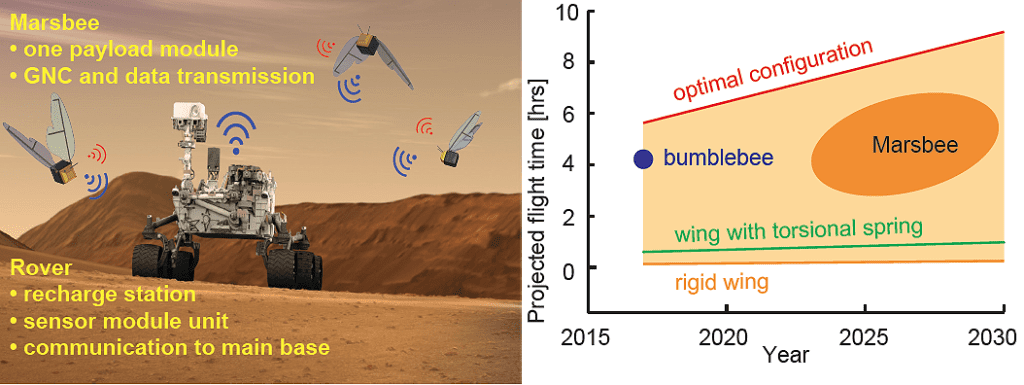
Graphic depiction of Marsbee – Swarm of Flapping Wing Flyers for Enhanced Mars Exploration. Credits: C. Kang.
Robot bees have been invented before, but Mars might be a place for them to serve a unique purpose. Earlier this year, it was revealed that the Japanese chemist Eijio Miyako led a team at the National Institute of Advanced Industrial Science and Technology (AIST) in developing robotic bees. So they’re not really bees; they’re drones. Miyako’s bee drones are actually capable of a form of pollination similar to real bees.
Bees have been the prime subject of many a sci-fi films including The Savage Bees (1976), The Swarm (1978), and Terror Out of the Sky (1978). In the 21st century, bees have been upgraded. Their robotic counterparts shall have an important role to play in future scientific exploration. And this role could very well be played out on the surface of Mars.
Now, NASA has begun to fund a project to create other AI-steered robotic bees for the future exploration of Mars. The main cause of experimenting with such mini robots is for the desirable need for speed. The problem is this: the traditional rovers sent to Mars in the past move very slowly. NASA anticipates an army of fliers to move significantly faster than their snail-like predecessors.
A number of researchers in Alabama are currently collaborating with a group based in Japan to design these mechanical drones. Sizewise the drones are very similar to real bees; however, the wings are unnaturally large. The lengthened wingspan was a well-needed feature to add since the Red Planet’s atmosphere is thinner compared to Earth’s. These small insect-like robots have been dubbed “Marsbees.”
If used, the Marsbees would travel in swarms and be able to return to some sort of a base, not unlike the way bees return to their hive. The base would likely be a rover providing a place for the Marsbees to be reenergized. But they would not have to come to this rover station to send out the information they’ve accumulated. Similar to satellites, they would be able to transmit their findings wirelessly. Marsbees would also likely be able to collect a variety of data. If their full development is feasible and economical, the future for Marsbees looks promising.









